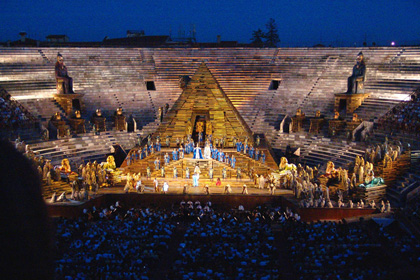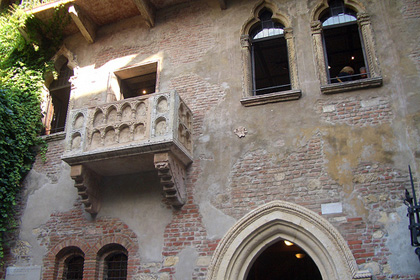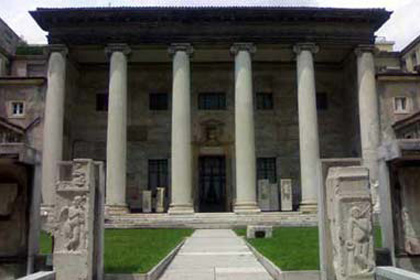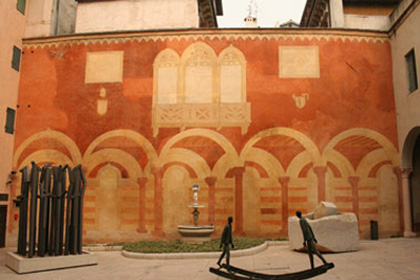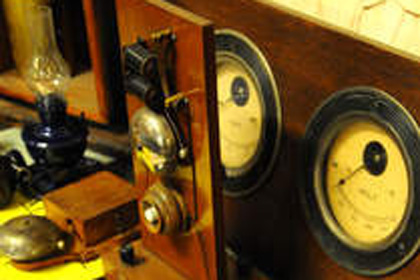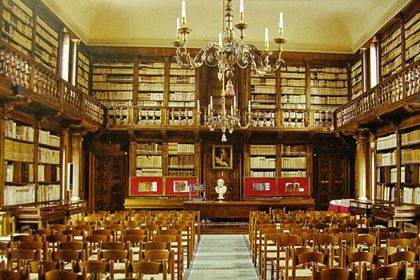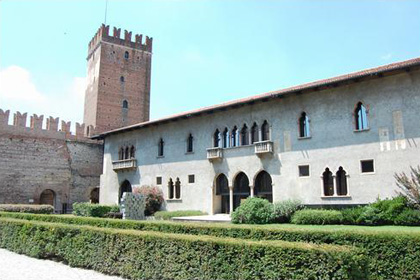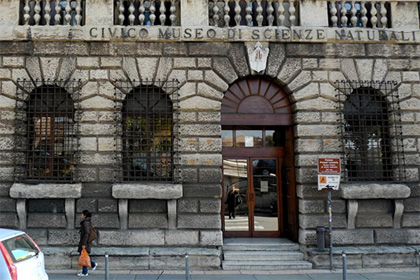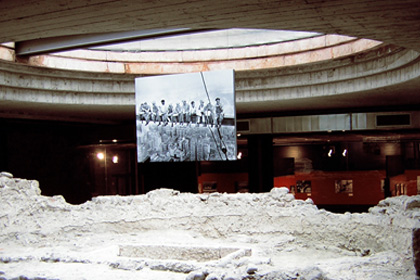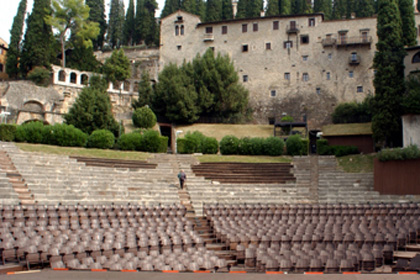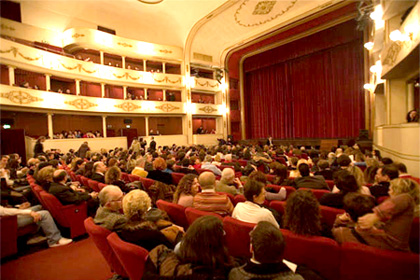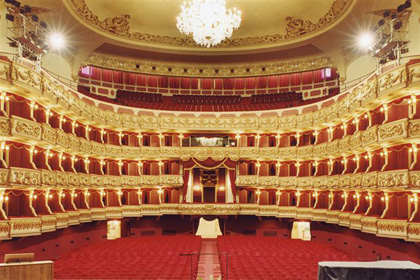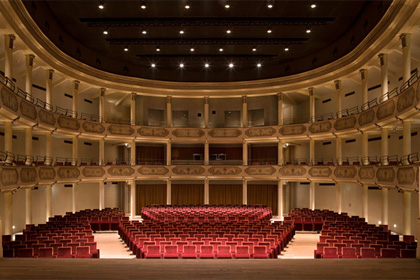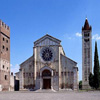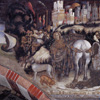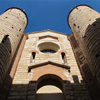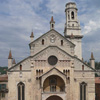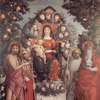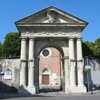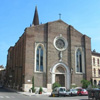-
The Arena
-
Back to the top
The Arena
On 10th August 1913 an event happened at the Arena of Verona which was to become a tradition and myth. For the first time in the world an opera was performed in the open air with an audience of thousands of spectators. An introduction is important; in 1913, centenary year of Giuseppe Verdi’s birth, there were various celebrations throughout Italy for this event. How was Verona going to celebrate? Giovanni Zenatello arrived in Verona. This Veronese tenor had obtained great fame in the States, and was sitting in Piazza Bra in front of the Arena talking about music with maestro Tullio Serafin and the contralto Maria Gay, when he suddenly exclaimed “Here is the theatre I’ve been looking for”! On 10th August 1913, after having checked the acoustics in the Arena, the Opera “Aida” was performed.
Before two months elapsed the three creators of the project had formed a chorus, an orchestra and had involved the architect Ettore Faggiuoli for the stage designing which is still used today. It was enormously successful.
Each year, since 1913, the Arena has been the magnificent setting of the famous Opera season. Every evening when the lights go off and the candles are lit, the magical atmosphere is created.
www.arena.it
-
-
Romeo and Juliet
-
Back to the top
Romeo and Juliet
Let’s imagine we are tracing back the love story of Romeo and Juliet. Their love story started amongst the 14th century walls of the “casa torre” (tower house) in Via Cappello. Popular tradition has always identified this building as the home of the Capulet’s. Amongst the nearby piazzas that intersect each other, the dream carries on to Romeo’s house, an urban castle, in a lane in the city, one of the most suggestive medieval houses which tradition attributes to the Montecchi household. The dream shatters at Juliet’s tomb, just outside the city. Verona is known worldwide for this marvellous love story invented by the playwright William Shakespeare. But was is true? Not the beautiful balcony a 14th century sarcophagus in pink Veronese marble, nor the antique tomb which is a drinking trough in red marble, but perhaps the two noble households fighting for supremacy over the city.
What is certain is that the myth is part of the Veronese and this sensation can be perceived by visiting Juliet’s house where the costumes, worn by the actors in Zeffirelli’s famous film “Romeo and Juliet “ in 1968, are displayed. A visitor also gets this feeling when visiting the tomb, next to the Museum of Frescos by “G.B. Cavalcaselle” and on reading the passionate letters addressed to the Club of Giulietta which are all duly acknowledged and answered.
www.julietclub.com
-
-
Museums
-
Back to the top
Museo Lapidario
Highly wished by Scipione Maffei, the famous Veronese scholar and collector, the site houses a very important collection of ancient findings and epigraphic material.
museomaffeiano.comune.verona.it -
Back to the top
AMO - Palazzo Forti
This ancient palace, once home of the terrible tyrant Ezzelino da Romano who in the 13th century brought the city to its knees, is today the AMO (ARENA MUSEO OPERA) , the new museum dedicate to Opera.
www.arenamuseopera.com -
Back to the top
Museo della Radio
This original and lesser known museum, is inside the Secondary School Galileo Ferraris, it displays a rich collection of 600 transmitters which trace the development of the radio from Marconi’s invention to the present day.
www.museodellaradio.com -
Back to the top
Biblioteca Capitolare
It is the oldest library of Latin culture. Dante and Petrarca used to research in it due to its extraordinary collection of precious antique books, incunabula, manuscripts. Today the documents kept in the halls are even more valuable.
www.capitolareverona.it -
Back to the top
Castelvecchio
This ancient castle built by Cangrande II della Scala is particular as it is said to have been built “on the contrary” to defend itself, not from outside enemies but from the rebellious citizens. This may be noticed from the defensive drawbridge to protect it from the city and the escape bridge built towards the outside.
After the World War II damages by bombs, the bridge was rebuilt in its original form in 1951 and Carlo Scarpa magnificently restored the castle converting it into a Museum in 1958.
Today it houses medieval sculptures and a large art gallery with ancient paintings.
www.comune.verona.it/castelvecchio/cvsito -
Back to the top
Municipal Natural History Museum
Since 1926 Palazzo Pompei, a mature work by Sanmicheli (1530), has been the premises of the Natural History Museum, one of the most important in Italy and Europe. The rooms house are dedicated to oceanic fossils from region of Bolca with many animal and plant species that lived 50 million years ago, to minerals, to stratigraphic geology, to zoology and to general prehistory.
www.museostorianaturaleverona.it -
Back to the top
Scaliger Excavations International Center of Photography
The Scaliger Excavations International Center of photography, with important exhibitions on varied themes, is housed in a archeological area partially visible through large portholes opening on the courtyard. Within a stratification of archaeological elements and masonry structures ranging from Roman to Scaliger time, offer a synthesis of the city's history.
scaviscaligeri.comune.verona.it
-
-
Theatres
-
Back to the top
Teatro Romano
This ancient Roman theatre lies at the foot of the San Pietro hill on the right bank of the river Adige.
It was built in tuff, the same material of the surrounding rocks, for years it was buried until excavations in the last century brought the remains to light. Inside the theatre one can visit the important and fascinating Archeological museum.
During the summer season the Teatro Romano organizes important events such as Shakespearian plays, concerts, ballet and the Jazz festival.
The cool breeze in the hot summer evenings, the music of the river and the natural scenery of the theatre make the setting particularly pleasant and magical.
www.estateteatraleveronese.it -
Back to the top
Teatro Nuovo
The opera “Attila” by Giuseppe Verdi inaugurated the Teatro Nuovo on 12th September 1846, it was built by wish of a private group of citizens. Throughout the 19th century operas were held. From the 20th century to the present day dramas and plays are performed throughout winter.
The theatre hosts the shows “Il grande teatro” and “Divertiamoci a Teatro”. The Teatro Nuovo is still privately owned today, it is also the headquarters of the Teatro Stabile di Verona, the only private theatre in the Veneto Region.
www.teatronuovoverona.it -
Back to the top
Teatro Filarmonico
Inaugurated in 1732 by wish of illustrious Veronese academics, it is still today one of the most important theatres in the city. Unfortunately the project of the architect Bibbiena was destroyed various times due to fire (1749) and bombings (1945), but the Philharmonic Academy always tried to reconstruct the theatre as before, handing it back to the city with its original splendour. Each year the Philharmonic Academy offers its citizens an international programme of classical music, the famous “September Academy”.
www.accademiafilarmonica.org
During the winter season, the theatre becomes the seat of the Arena Foundation which offers a rich programme of classical music, ballet and opera.
www.arena.it
Next to the theatre there is the original Sala Maffeiana, dedicated to the famous Veronese scholar Scipione Maffei. The door leading to the hall is the only one surviving in its original form. In 1770 Wolfgang Amadeus Mozart played in that concert hall in such a admirable way as to be nominated honorary member of the Academics. The walls were frescoed by the painter Filippo Maccari at the end of the 18th century, and the hall is to this day considered a unique place for its beauty and elegance and offers the city chamber music. -
Back to the top
Teatro Ristori
The Theatre, opened in 1837 for horse shows, is titled in 1856 in honor of Adelaide Ristori, a famous actress of the 'nineteenth century. Closed in 1983, following a major restoration was opened January 14, 2012.
It hosts exhibitions of theater, music and ballet.
www.teatroristori.org
-
-
The Churches
-
Back to the top
The Churches
A stay in Verona is not complete without visiting the five most beautiful churches: San Zeno, Sant’Anastasia, San Lorenzo, San Fermo Maggiore and the Duomo (the Cathedral).
Verona Card offers a special reduction:
- For church lovers, we also recommend Santa Maria in Organo, with the beautiful wooden choir stalls;
- San Nazaro e Celso with the beautiful chapel recently restored;
- San Tomaso where one can still hear in the air the notes from the ancient organ which was once played by the young Mozart during his stay in Verona;
- San Giovanni in Valle with the magnificent roman cloisters.
www.veronaminorhierusalem.it
-




